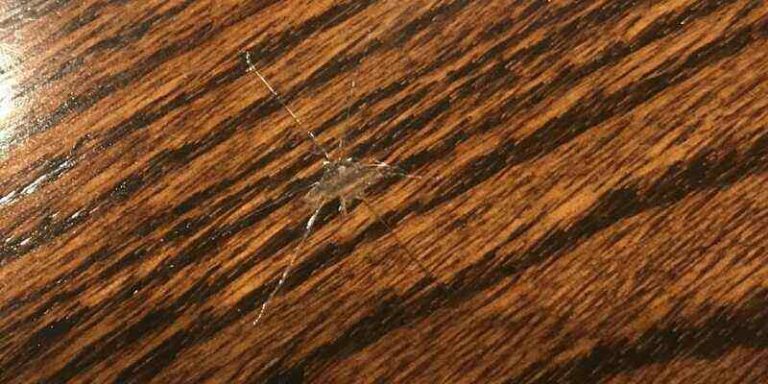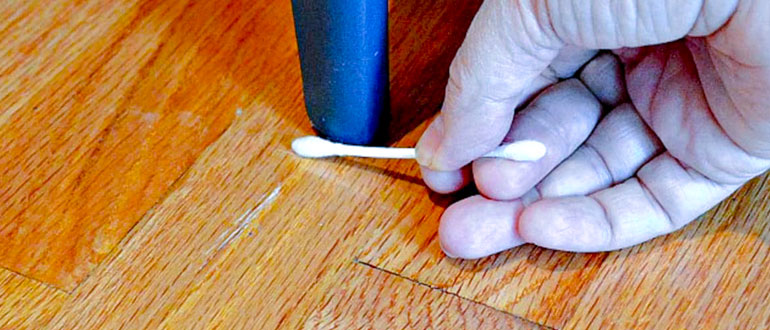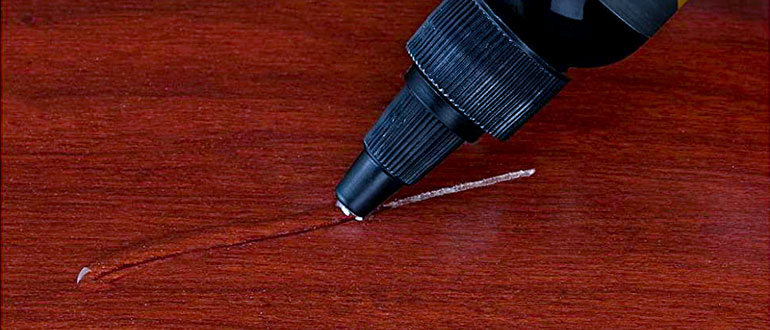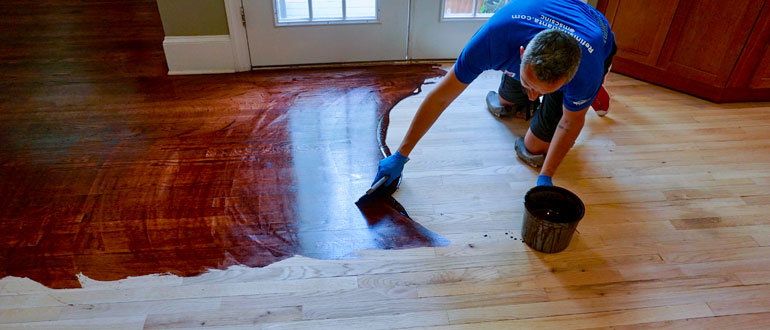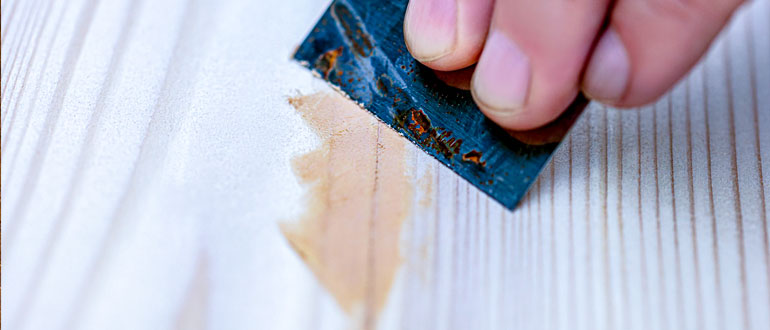Hardwood floors are popular for their beauty, durability, and timeless appeal. However, over time, even the most well-maintained hardwood floors can develop scratches, dings, and other signs of wear and tear. If you have polyurethane hardwood floors, you may wonder how to fix scratches in polyurethane hardwood floors. This comprehensive guide will show you how to restore your floors to their former glory.
Understanding Polyurethane Hardwood Floors
Polyurethane hardwood floors are a type of hardwood floor coated with a layer of polyurethane to protect it from scratches, dings, and other types of damage. This layer acts as a barrier between the hardwood and the elements, helping to extend the floor’s life.
Types of Scratches on Polyurethane Hardwood Floors
Two types of scratches can occur on polyurethane hardwood floors: surface scratches and deep scratches. Surface scratches are shallow and only affect the surface of the polyurethane coating. On the other hand, deep scratches can penetrate the polyurethane coating and reach the hardwood underneath.
Causes of Scratches on Polyurethane Hardwood Floors
Scratches on polyurethane hardwood floors can be caused by a variety of factors, including:
- Moving furniture
- Walking or running on the floors
- Dropping heavy objects on the floor
- Spills or stains
How to Fix Scratches in Polyurethane Hardwood Floors
The best way to fix scratches in polyurethane hardwood floors will depend on the type and depth of the scratch. In this section, we will outline several methods for fixing both surface and deep scratches.
Fixing Surface Scratches in Polyurethane Hardwood Floors
- Use a hardwood floor cleaner: Clean the area around the scratch with a hardwood floor cleaner and a soft cloth. This will remove any dirt or debris, causing the scratch to appear more noticeable.
- Apply hardwood floor touch-up markers: These markers come in various colors and can fill in surface scratches. Choose a color that matches your hardwood floor, and apply the marker to the scratch.
- Use hardwood floor wax: Apply a small amount of hardwood floor wax to the scratch and buff it with a soft cloth until it is no longer visible.
Fixing Deep Scratches in Polyurethane Hardwood Floors
- Sand the area: Sand the area around the scratch using fine-grit sandpaper. This will remove the polyurethane coating and level out the surface.
- Fill the scratch: Fill the scratch with a hardwood floor filler that matches the color of your hardwood floor. Apply the filler with a small brush and let it dry completely.
- Sand the filled area: Once the filler has dried, sand the area again using fine-grit sandpaper. This will help smooth the surface and blend the filled area with the surrounding hardwood.
- Re-coat the area: Re-coat the filled area with a thin layer of polyurethane using a small brush or roller. Let the polyurethane dry completely, then repeat the process two to three times, allowing each coat to dry before applying the next.
Tips for Preventing Scratches in Polyurethane Hardwood Floors
To prevent scratches on your polyurethane hardwood floors, it is important to take a few simple steps to protect them. Here are some tips to help you keep your floors looking like new:
- Use floor protectors on the legs of furniture to prevent scratching.
- Avoid walking on the floors with high heels or other sharp-heeled shoes.
- Clean up spills and stains as soon as possible to prevent them from becoming scratches.
- Place a rug or mat in high-traffic areas to absorb dirt and debris.
How do you remove scuff marks from polyurethane hardwood floors?
To remove scuff marks from polyurethane hardwood floors, follow these steps:
- Gather materials: You will need a soft cloth, a mild cleaner, and a small amount of vegetable or lemon oil.
- Clean the area: Wipe the scuff mark with a soft cloth and a mild cleaner to remove any dirt or debris.
- Apply oil: Dampen a soft cloth with a small amount of vegetable or lemon oil and gently rub the scuff mark.
- Buff the area: Use a clean, dry cloth to buff the area and remove any excess oil.
- Repeat if necessary: If the scuff mark is still visible, repeat the process until it is no longer noticeable.
Note: Be careful not to use harsh cleaners or abrasive materials, as these can damage the polyurethane finish on your hardwood floors. If the scuff mark is particularly stubborn, you may need to consult a professional flooring contractor.
Can I apply polyurethane over old polyurethane?
Yes, you can apply polyurethane over old polyurethane, but there are a few things to consider. If the old polyurethane is in good condition and there are no scratches or other damage, you can apply a new coat of polyurethane to freshen up the finish. However, if the old polyurethane is scratched or damaged, it must be sanded down and smoothed out before applying a new coat.
Additionally, It’s important to use a compatible polyurethane product, as some types of polyurethane are not suitable for use over previous coats. Additionally, the surface should be thoroughly cleaned and degassed before applying a new polyurethane coat to ensure proper adhesion.
It is generally best to consult a professional flooring contractor for guidance on applying polyurethane over old polyurethane, as the process can be complex and requires specific knowledge and skills.
How to fix scratches on hardwood floors from a dog?
Fixing scratches on hardwood floors caused by a dog can be done using the following steps:
- Clean the area: Wipe down the scratched area with a soft cloth and a mild cleaner to remove any dirt or debris.
- Sand the area: Lightly sand the scratched area with fine-grit sandpaper until it is smooth. Be careful not to sand too much, as you could damage the hardwood.
- Clean the area again: After sanding, wipe down the area with a clean, damp cloth to remove any sawdust or debris.
- Apply wood filler: Fill the scratch with wood filler and allow it to dry according to the manufacturer’s instructions.
- Sand the filled area: Lightly sand the filled area until it is smooth and even with the surrounding hardwood.
- Apply a new coat of polyurethane: Brush on a new coat of polyurethane to protect the hardwood and match the surrounding finish.
- Buff the area: After the polyurethane has dried, use a clean, dry cloth to buff the area and remove any excess finish.
Note: If you need more clarification about your ability to repair the scratches. Definitely, it may be best to consult a professional flooring contractor. Also, consider preventing future scratches by using area rugs, training your dog, and trimming their nails regularly.
How do you repair a damaged polyurethane?
Repairing damaged polyurethane can be done using the following steps:
- Clean the area: Wipe down the damaged area with a soft cloth and a mild cleaner to remove any dirt or debris.
- Sand the area: Lightly sand the damaged area with fine-grit sandpaper until it is smooth. Be careful not to sand too much, as you could damage the polyurethane further.
- Clean the area again: After sanding, wipe down the area with a clean, damp cloth to remove any sawdust or debris.
- Apply wood filler: Fill any dents or gaps in the polyurethane with wood filler and allow it to dry according to the manufacturer’s instructions.
- Sand the filled area: Lightly sand the filled area until it is smooth and even with the surrounding polyurethane.
- Apply a new coat of polyurethane: Brush on a new coat of polyurethane to protect the surface and match the surrounding finish.
- Buff the area: After the polyurethane has dried, use a clean, dry cloth to buff the area and remove any excess finish.
Note: If the damage to the polyurethane is extensive. It may be best to consult a professional flooring contractor for assistance. Additionally, be careful not to use harsh cleaners or abrasive materials, as these can further damage the polyurethane.
FAQs
Q: Can I fix scratches in polyurethane hardwood floors myself?
A: Yes, you can fix scratches in polyurethane hardwood floors with simple tools and materials. However, it may be best to consult a professional flooring contractor if you need help with how to proceed or if the scratch is particularly deep.
Q: Is it possible to remove deep scratches in polyurethane hardwood floors?
A: It is possible to remove deep scratches in polyurethane hardwood floors by sanding the area, filling the scratch, and re-coating the area with polyurethane. However, the process can be time-consuming and require patience and skill.
Q: How can I prevent scratches on my polyurethane hardwood floors?
A: To prevent scratches in your polyurethane hardwood floors, you should protect them from high-traffic areas, sharp-heeled shoes, spills, and stains. You can also use floor protectors on the legs of furniture and place rugs or mats in high-traffic areas.
Conclusion:
In conclusion, Polyurethane hardwood floors are a beautiful and durable option for your home, but even the best-maintained floors can develop scratches over time. Whether you have surface scratches or deep scratches, with a few simple tools and materials.
Additionally, You can restore the beauty of your floors. Following the steps outlined in this comprehensive guide, you can fix scratches in polyurethane hardwood floors and keep them looking new.
